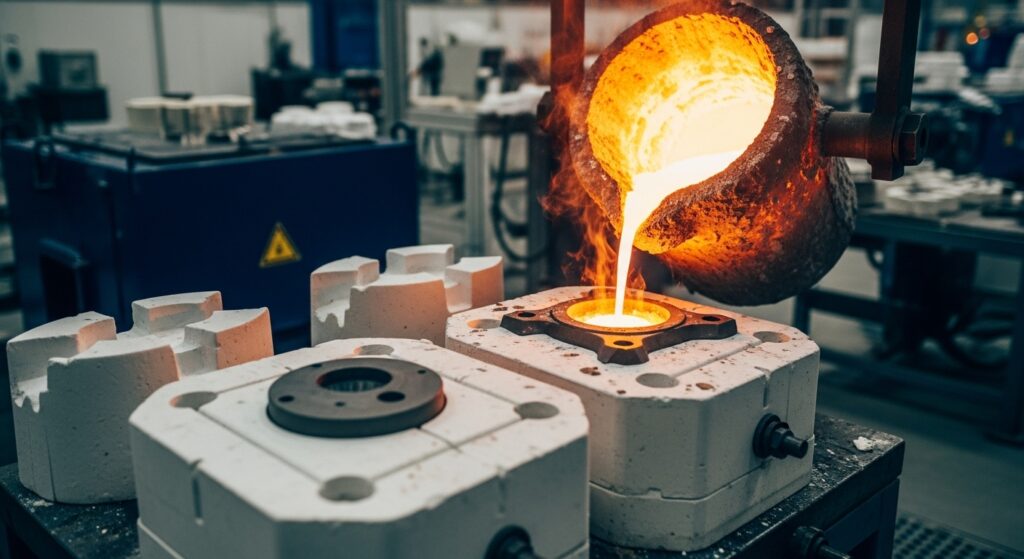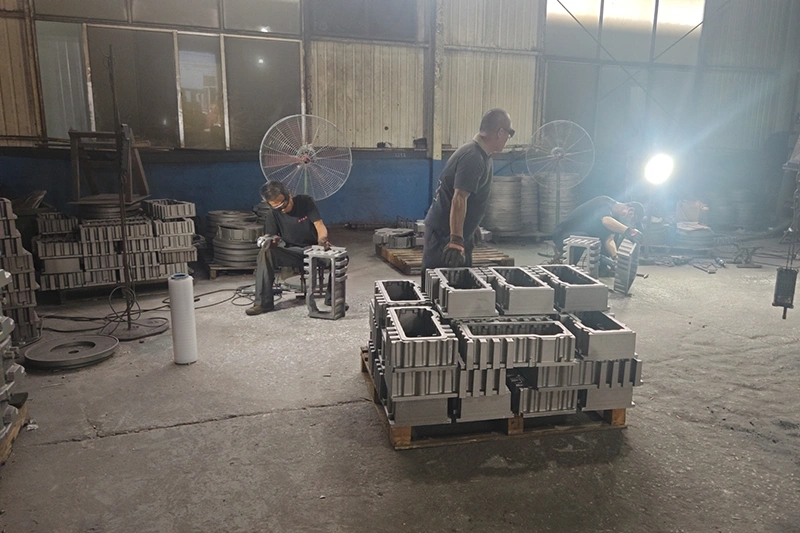The main difference between gravity die casting and high-pressure die casting is the force used to fill molds. Gravity die casting uses gravity to fill the mold slowly, while high-pressure die casting forces molten metal into the mold at high pressure for faster, more detailed production.

High-pressure die casting forces molten metal into a steel mold cavity under extreme pressure, typically between 1,500 and 25,000 psi. This manufacturing process creates complex metal parts with excellent surface finish and tight dimensional tolerances.
The process works best with non-ferrous metals like aluminum, zinc, and magnesium. These metals have lower melting points that make them ideal for rapid production cycles.
Gravity die casting uses the natural force of gravity to fill a permanent metal mold with molten metal. The process operates at much lower pressures than high-pressure die casting, relying only on the weight of the liquid metal.
This method works particularly well for aluminum and copper-based alloys. The slower filling speed allows better control over the metal flow and reduces turbulence.
Gravity die casting excels at producing parts with superior mechanical properties. The controlled cooling and minimal turbulence create stronger, more ductile components than high-pressure methods.
| Feature | Gravity Die Casting | High-Pressure Die Casting (HPDC) |
|---|---|---|
| Process Principle | Molten metal is poured and fills the die under the force of gravity. | Molten metal is injected into the die under high pressure and velocity. |
| Pressure | Atmospheric pressure (gravity-fed). | 10 to 200 MPa (1,500 to 29,000 psi). |
| Tooling Cost | Lower; dies are simpler and subject to less stress. | Higher; dies must be robust to withstand high pressures and injection forces. |
| Production Rate | Slower; typically 15-30 cycles per hour. | Very fast; 50-90 cycles per hour, can be significantly higher for smaller parts. |
| Part Size & Weight | Suitable for a wide range of sizes, including larger and heavier parts (up to 40 kg or more). | Best suited for small to medium-sized parts, typically up to 5 kg. |
| Wall Thickness | Thicker walls are generally required, typically a minimum of 3-5 mm. | Capable of producing very thin walls, as low as 1.5 mm. |
| Achievable Tolerances | Good, but generally less precise than HPDC. | Excellent; tighter tolerances can be achieved and maintained. |
| Surface Finish (Ra) | Good; typically in the range of 4-10 μm. | Excellent; smoother surface finishes, often 1-4 μm. |
| Porosity | Lower levels of porosity due to less turbulence during filling. | Higher potential for porosity due to entrapped air from high-speed injection. |
| Mechanical Properties | Generally superior due to lower porosity and a more uniform grain structure. Parts can be heat-treated. | Mechanical properties can be compromised by porosity. Heat treatment is often not possible. |
| Common Alloys | Aluminum, Zinc, Copper, and some cast irons. | Primarily non-ferrous alloys with lower melting points like Aluminum, Zinc, and Magnesium. |

